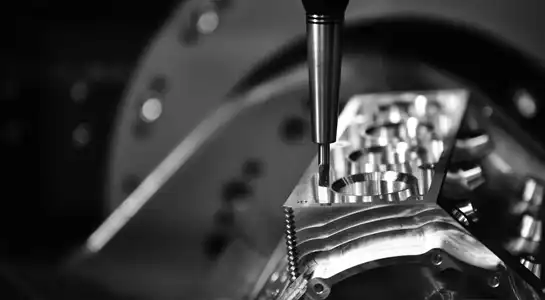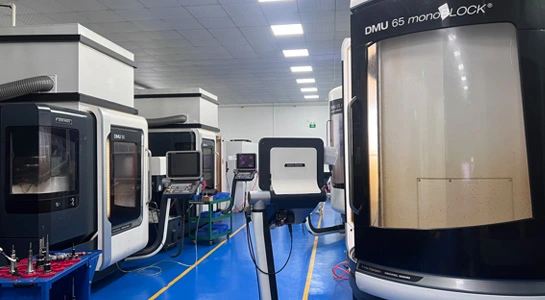The Rapid Prototyping Process: From Concept to Reality
Design Refinement and Optimization
The journey of rapid prototyping begins with refining your initial concept. Expert engineers will analyze your design, offering suggestions to optimize it for manufacturability. This stage may involve CAD modeling and simulations to identify potential issues before production. The goal is to ensure your prototype not only looks good but also functions as intended. Design refinement might include tweaks to improve structural integrity, reduce material usage, or enhance performance. This collaborative process between you and the prototyping team sets the foundation for a successful final product.
Material Selection and Manufacturing Techniques
Choosing the right material is crucial in rapid prototyping. Depending on your project requirements, you might opt for plastics, metals, or composite materials. Each material offers unique properties that can affect the prototype's functionality, durability, and appearance. The prototyping service will guide you through this selection process, considering factors like strength, flexibility, and heat resistance. Once the material is chosen, the manufacturing technique comes into play. Advanced methods like Selective Laser Sintering (SLS), Stereolithography (SLA), or CNC machining are employed based on your specific needs. These technologies allow for precise replication of complex geometries and intricate details with prototypes made fast.

Quality Control and Iteration
Quality assurance is an integral part of the rapid prototyping process. Each prototype undergoes rigorous testing to ensure it meets the specified requirements. This may involve dimensional accuracy checks, functional testing, and visual inspections. If any discrepancies are found, the prototype can be quickly adjusted and reproduced. The beauty of rapid prototyping lies in its iterative nature. You can easily make changes based on test results or new insights, refining your design with each iteration. This agile approach allows for continuous improvement, helping you achieve the perfect prototype in record time.
Advantages of Fast Prototyping in Product Development
Accelerated Time-to-Market
One of the most significant benefits of fast prototyping is the dramatic reduction in product development timelines. Traditional prototyping methods often took weeks or even months to produce a single iteration. With rapid prototyping, you can have a physical model in your hands within days. This speed allows for quick validation of concepts, faster decision-making, and the ability to respond swiftly to market demands. By compressing the development cycle, you can launch your product ahead of competitors, gaining a valuable edge in today's fast-paced market. Moreover, the ability to quickly produce multiple iterations enables you to refine your design more effectively, ensuring a higher-quality end product.
Cost-Effective Design Validation
Fast prototyping offers a cost-effective way to validate your design before committing to full-scale production. By identifying and addressing potential issues early in the development process, you can avoid expensive retooling or redesigns later. The ability to test multiple design variations quickly allows you to optimize your product for both performance and manufacturability. This can lead to significant savings in material costs and production time when you move to mass production. Additionally, having prototypes made fast can help in securing funding or pre-orders, as it provides tangible proof of your concept to potential investors or customers.

Enhanced Collaboration and Communication
Rapid prototyping fosters better collaboration among team members and stakeholders. Having a physical model to examine and interact with can bridge communication gaps that often occur when relying solely on digital designs. Engineers, designers, and marketing teams can provide more accurate feedback when they can see and touch the prototype. This tangible representation of the product idea helps align everyone's vision and expectations. Moreover, prototypes serve as powerful tools in client presentations, allowing for immediate feedback and adjustments. This collaborative approach often leads to more innovative solutions and a final product that better meets user needs and market demands.
Challenges and Considerations in Fast Prototyping
Balancing Speed and Quality
While fast prototyping offers tremendous advantages, it's crucial to strike the right balance between speed and quality. The pressure to produce quickly shouldn't compromise the integrity of your prototype. It's important to work with a prototyping service that maintains high standards even under tight deadlines. This might involve using advanced quality control measures or implementing parallel processing techniques to speed up production without cutting corners. Remember, a prototype that doesn't accurately represent your final product can lead to misguided decisions and costly mistakes down the line. Discuss quality assurance protocols with your prototyping partner to ensure your fast-tracked prototype meets all necessary specifications.
Managing Expectations and Limitations
Fast prototyping, while powerful, has its limitations. It's essential to manage expectations about what can be achieved within a short timeframe with prototypes made fast. Some complex designs may require multiple iterations or longer production times to achieve the desired result. Additionally, certain materials or finishes might not be available for rapid prototyping, necessitating compromises or alternative solutions. Clear communication with your prototyping service about project goals, timelines, and potential constraints is crucial. Understanding these limitations upfront can help you plan your development process more effectively and avoid disappointment or delays.

Intellectual Property Protection
When engaging in fast prototyping, particularly with external services, protecting your intellectual property becomes a key consideration. Rapid sharing of design files and quick production cycles can potentially expose your ideas to competitors. It's vital to have proper non-disclosure agreements and confidentiality measures in place before starting the prototyping process. Choose a reputable prototyping service with robust security protocols to safeguard your designs. Consider patenting your invention before seeking prototyping services if your idea is particularly novel. While speed is important, taking the time to protect your intellectual property can save you from significant legal and financial troubles in the future.
Conclusion
Fast prototyping has revolutionized the product development landscape, offering unprecedented speed and flexibility. By embracing this approach, you can accelerate your time-to-market, validate designs cost-effectively, and foster better collaboration among stakeholders. However, it's crucial to balance the need for speed with quality considerations and manage expectations about what can be achieved rapidly. With the right prototyping partner and a clear understanding of the process, you can harness the full potential of prototypes made fast to bring your innovative ideas to life quickly and efficiently. As technology continues to advance, the possibilities for rapid prototyping will only expand, further streamlining the journey from concept to market-ready product.
FAQs
How long does fast prototyping typically take?
Fast prototyping can take anywhere from a few days to a couple of weeks, depending on the complexity of the project and the chosen manufacturing method.
What materials can be used in rapid prototyping?
Common materials include various plastics, metals, and composites. The choice depends on the project requirements and the prototyping method used.
Is fast prototyping suitable for all types of products?
While fast prototyping is versatile, it may have limitations for extremely large or highly complex products. Consult with a prototyping expert to determine the best approach for your specific needs.
Expert Prototyping Solutions for Your Fast-Track Projects | BOEN
At BOEN Prototype, we specialize in delivering high-quality, rapid prototyping solutions for a wide range of industries. Our state-of-the-art facilities and experienced team ensure fast turnaround times without compromising on quality. Whether you need CNC machining, injection molding, or 3D printing services, our expert engineers are ready to bring your ideas to life. Contact us at contact@boenrapid.com to discuss how we can accelerate your product development journey.
References
Smith, J. (2022). "Rapid Prototyping: Accelerating Product Development in the Digital Age." Journal of Manufacturing Innovation, 15(3), 78-92.
Johnson, A., & Lee, S. (2021). "The Impact of Fast Prototyping on Time-to-Market: A Comprehensive Analysis." International Journal of Product Development, 8(2), 145-160.
Chen, X., et al. (2023). "Material Considerations in High-Speed Prototyping: Balancing Performance and Manufacturability." Advanced Materials Processing, 29(4), 301-315.
Taylor, R. (2022). "Quality Control Strategies for Rapid Prototyping: Ensuring Accuracy in Accelerated Timelines." Quality Engineering Quarterly, 18(1), 55-70.
Garcia, M., & Patel, K. (2021). "Collaborative Design in the Era of Fast Prototyping: Challenges and Opportunities." Design Studies, 42, 180-195.
Wong, L. (2023). "Intellectual Property Protection in Fast-Paced Prototyping Environments." Technology Law Review, 11(3), 210-225.





